Modern military shooters are in a strange place at the moment. Battlefield is licking its wounds after stepping on the landmine that was Battlefield 2042, while Call of Duty is running around like the dog that caught the car, the massive success of Warzone leaving the mainline series at a loss with what to do with itself.
It’s a chaotic, uncertain time in one of multiplayer gaming’s biggest spheres, and the various shenanigans of EA and Activision have left room for something new to make their mark in the genre. Enter Delta Force: Hawk Ops, which you’ll be shocked to hear is not a Trauma Team-style game about performing surgery on birds of prey. Instead, it’s a free-to-play military shooter in the Battlefield/CoD mold, based on the series that predates either, and it could be the shot of competence and stability that the genre sorely needs.
Currently running a month-long Alpha, Hawk Ops provides access to two of its three game modes. The first of these, Havoc Warfare, is a classic large-scale attack/defense scenario similar to Battlefield’s Rush, with the attacking team trying to capture a linear sequence of control points, and the defending team attempting to hold back the tide until the attackers ‘collective pool of lives runs dry.
Manage cookie settings
Nearly everything in this mode is structured according to the gospel of DICE. Players control a range of ‘Operators’, most of which are variants on Battlefield’s Assault, Support, Medic, and Recon with a few bells and whistles attached. Players are grouped into squads, members of which double as mobile spawn points, encouraging you all to work together. And alongside fighting as infantry, players can spawn and control a wide array of vehicles, including tanks, APCs and helicopters.
In other words, not particularly original. But fried chicken isn’t original either, yet it still tastes great when it’s done right. And Hawk Ops certainly seems to have all the correct herbs and spices. Player movement has that perfect balance of momentum and physicality that Battlefield always provides, the familiar assortment of M16s and sniper rifles are all fundamentally satisfying to wield, and it has that all-important capacity to dazzle with player-driven spectacle, with the frontline constantly popping and billowing with exploiting vehicles and ordinance.
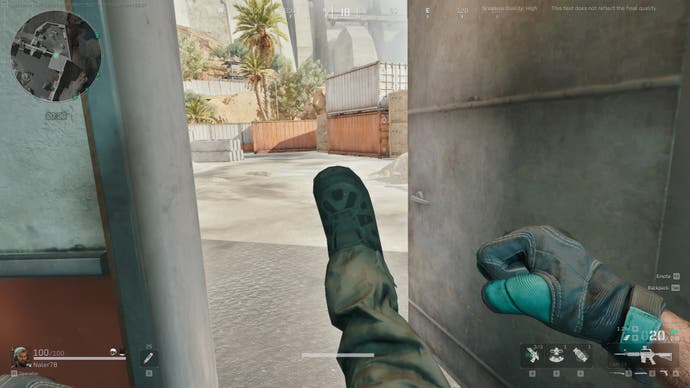
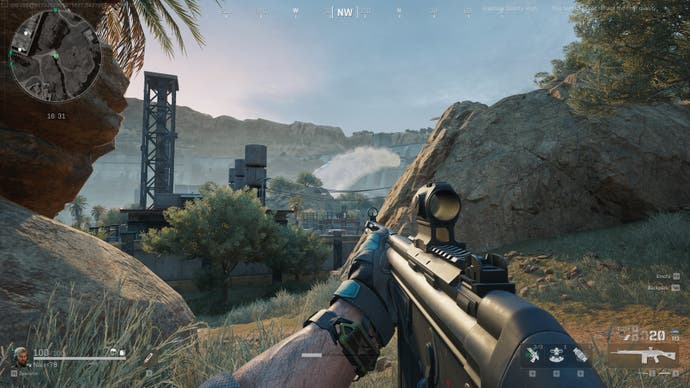
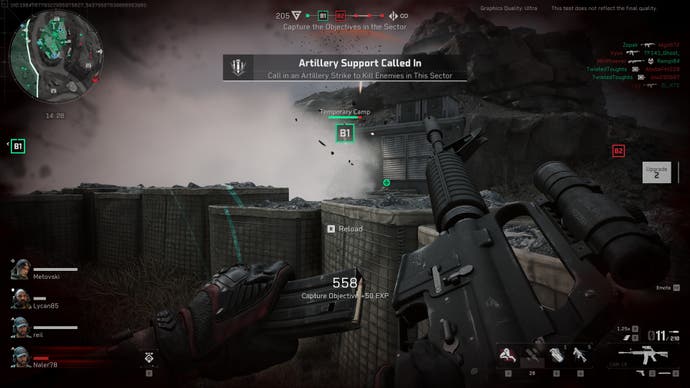
All of which is a long-winded way of saying that Hawk Ops feels good to play, Moreover, while Havoc Warfare is undoubtedly heavily inspired by Battlefield, it isn’t a carbon copy. The classes are a shade more involved than Battlefield’s, with abilities and equipment that encourage a more tactical approach to play. The Recon character, for example, can be played as a standard backline sniper. But she also carries a bow with arrows that will tag enemies in a wide pool, and she can deploy a fixed spawn point for the entire team. With these, there’s an implicit motivation to play higher up the field, supporting the frontline assault by tagging enemies and facilitating faster reinforcements.
The other area where Hawk Ops has the potential to define itself is in its map design. There were two maps on offer. One was a fairly standard middle-eastern town, which was sufficiently chewy from a tactical perspective, but not imaginatively invigorating. Yet the other map, fittingly named Ascension, has been bouncing around my mind like a dumdum round since I stopped playing. This saw players fighting over a mountaintop fortress on a rugged volcanic island. The action kicks off with the attacking side rushing for the beaches in an armada of gunboats, before fighting through the coastal defenses to zipline up to the mountaintop facility. It’s a gratifying mixture of ideas, flowing between rocky open spaces and gnarly interior gunfights.


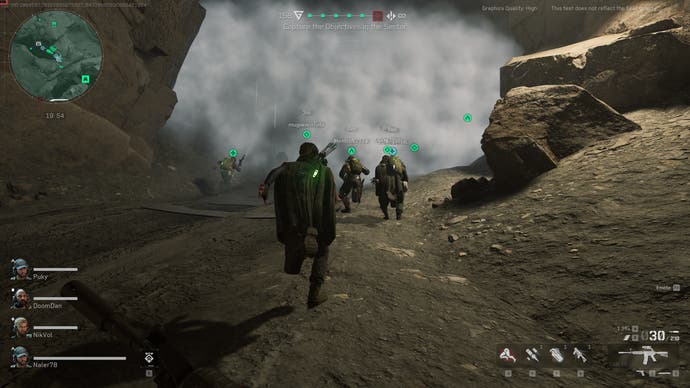

If Hawk Ops can provide a decent single-player experience… then Battlefield and Call of Duty could be in for a rather unpleasant surprise.
In short, I’m entirely happy to see more of Havoc Warfare. But that’s only half of what Hawk Ops’ alpha offers. The other mode, Tactical Turmoil, is less inspired by the standard shooters of the last decade, instead drawing from extraction shooters like Hunt: Showdown and Escape from Tarkov. Either playing alone or joining a squad of up to two other players, you infiltrate a large, openly explorable map trying to gather as much valuable loot as you can before leaving the map at one of several designated Extraction points. If you die, it’s instant game over, and you lose everything you carry short of your socks.
The feeling of this mode is very different from Havoc Warfare, less fire and thunder, more tension and emphasis on tactics. Although there are AI enemies scattered around the map, they’re sparsely distributed, so there isn’t that constant cacophony of gunfire. There’s also much less room for individual players to hide in this mode. You really need to be aware of your surroundings and in-sync with your team, watching your flanks for enemies, covering one another while you search for loot. Sound plays a particularly important role in Tactical Turmoil. Not only can gunfire be heard from a distance, both player and AI footsteps can too. Furthermore, AI footsteps seem to have a particular rhythm to them, meaning canny players could learn to mimic them to throw off their rivals, like the Fremen sand walking in Dune.

It’s a great synthesis of the tension of both spec-ops operations and extraction shooters, although I do wonder about the optics of Western military units infiltrating a conflict-ridden Middle Eastern nation and robbing it blind. Granted, you’re notionally there to retrieve “intel”, but that doesn’t stop you from lining your pockets with PC components and rare artifacts.
Questionable ethics aside, there are a couple of interesting twists to Hawk Ops’ take on Extraction Shooting. As you explore you can take on optional “contracts”, which will task you with eliminating a particular AI enemy. This adds a fun additional risk/reward dynamic, as these contracts will often lead you into confrontations with tougher foes than the standard grunts.
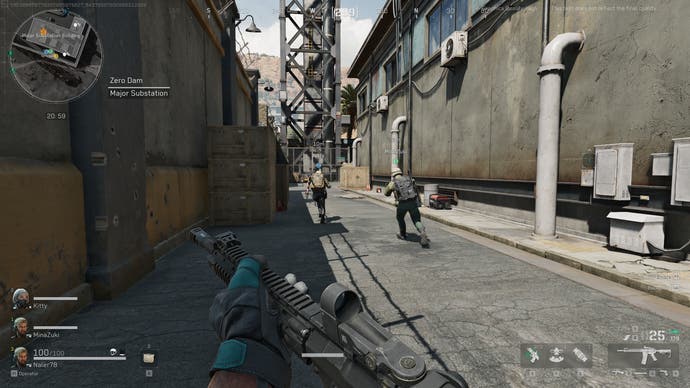
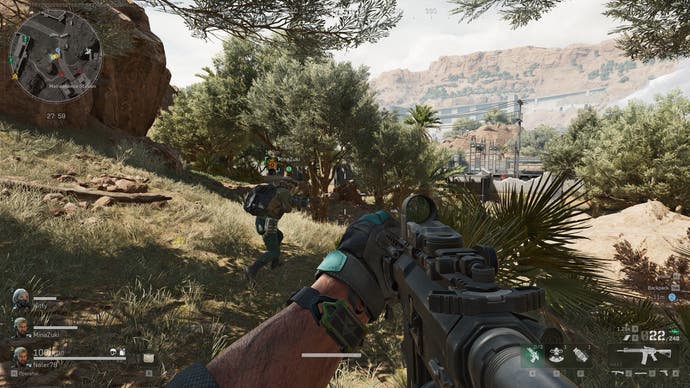
Extracting from the map also has a surprising amount of nuance. Zero Dam, for example, is a rocky desert valley with several facilities, all loomed over by the titular dam. The main Extraction point is an elevator inside the dam, which must be unlocked from other points on the map and has a two-minute countdown timer. Unlocking it also sets off a loud alarm, which is like ringing the dinner bell for loot-hungry players. If you don’t fancy risking the lift, there are several more secluded extraction points you can use. But each comes with a penalty, such as paying a set amount of in-game currency to use it or being forced to drop your backpack.
Finally, the class system from Havoc Warfare carries over, meaning you can take your Medic or Recon abilities into a match with you. This is the one mechanical choice I’m not entirely sold on. I worry it overcomplicates matters a little, and somewhat contradicts this mode’s aspirations to authenticity. It’s a bit weird having a backpack full of medical items for treating an array of injuries and conditions, while also playing as a medic class who carries around a gun that fires magic healing darts. Given extraction shooters are notionally defined by the loot you’ve gathered, these quirky abilities feel a tad strange, like adding crafting to Tetris.
Yet while there are some wrinkles to iron out, that’s what an Alpha test is for, and I was sufficiently entertained by my time with Hawk Ops to want to see more. Alongside these two modes, Hawk Ops will also launch with a full single-player campaign set in the Black Hawk Down incident of 1993. If Hawk Ops can provide a decent single-player experience, alongside its combination of big multiplayer fireworks and free-roaming tactical engagements, then Battlefield and Call of Duty could be in for a rather unpleasant surprise.
#Delta #Force #Hawk #Ops #real #shot #knocking #Call #Duty #Battlefield #perch
